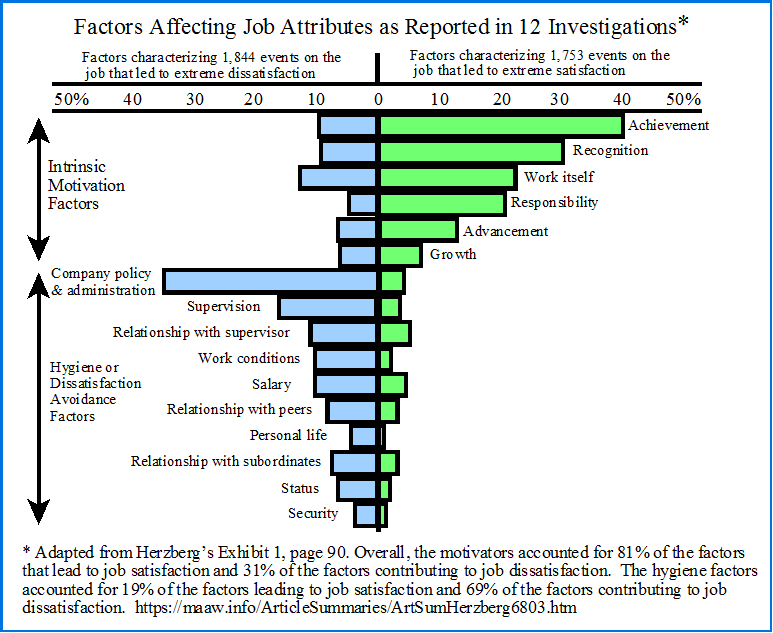Retaining Talent: A Deep Dive into Attrition Rates

Employees will come and go from your organization – that’s business.
But how do you know when too many are leaving?
That’s what understanding your attrition rate is all about. The attrition rate, often called turnover rate, represents the number of employees leaving an organization over a given period, typically one year.
Employee attrition is inevitable, and to an extent, a fresh supply of new talent is no bad thing if companies manage its adverse effects and understand when attrition is a cause for concern.
Monitoring and managing attrition is essential, as losing an employee can cost 1/3rd of their annual salary. That includes everything from temporarily plugging skills gaps to recruitment and onboarding.
High attrition rates significantly impact a company’s stability, productivity, and growth trajectory.
Here’s all you need to know to understand and manage attrition rates.
Understanding Attrition Rate
Definition of Attrition Rate
Attrition rates represent the percentage of employees that leave a company within a specific period of time, usually a year. For example, if you have 100 employees and 10 leave per year, your attrition rate is 10%.
According to Oracle, the average attrition rate for full-time employees is around 18%.
However, it’s essential to note that this varies hugely between industries. For example, in retail, finance, and professional business services, attrition rates exceeding 50% aren’t uncommon.
Don’t panic if your attrition rate is higher than the typical average of 18% – it depends on why employees leave. A high attrition rate above approximately 20% should prompt an investigation of employee satisfaction, engagement, and other factors affecting retention.
Importance of Managing Attrition Rate in Companies
Attrition rate is pivotal to understanding employee motivation and engagement. A high attrition rate might provide insights into the employee experience, signaling a disengaging work environment, poor management, or excessive workloads.
Additionally, replacing employees is expensive, and retaining top employees is vital to maintain company growth and stability.
Calculating Attrition Rate
Calculating attrition rate is a straightforward process. Divide the number of employees who left the company during a specific period by the average number of employees. In most cases, a year is the most appropriate timeframe.
Then, multiply the result by 100 to get the attrition rate as a percentage.
Here’s the calculation: Attrition rate = (No. of separations / Avg. No. of employees) x 100.
For example, if you have 50 employees at the start of the year and 50 at the end, and 12 left over that year, you divide 12/50 to get 0.24. Times that by 100, and your attrition rate is 24%.
However, suppose you added 25 new roles that year. In that case, you add 50 (the number of employees present at the start of the year) to 75 (the number present at the end) and divide by two to get the average number of employees, which is 62.5.
In that case, 12/62.5 x 100 = 19.2
It’s essential to highlight that attrition rates shouldn’t include new hires for newly created job roles – it solely focuses on the net loss of employees from the company.
Types of Attrition
There are two types of attrition which are typically combined into one metric. We can classify attrition into two categories: voluntary and involuntary.
- Voluntary attrition occurs when employees leave willingly, perhaps due to better job opportunities, relocation, or retirement.
- On the other hand, involuntary attrition happens when the company decides to terminate the employment, often due to layoffs, firing, or business closing.
Effects of High Attrition Rate on Companies
Attrition rate by itself is just one piece of the puzzle.
Why? Because attrition rates are highly variable and change all the time. In the last few years, people are switching or leaving their jobs more often, as we’ve seen with “The Great Resignation.”
So, the raw attrition rate figure may not mean much by itself. Instead, it should prompt an investigation into the root causes, particularly if the rate has increased over time.
Causes of High Attrition Rates
Let’s delve into some of the primary causes of high attrition rates.
Factors are sometimes split into intrinsic factors, such as growth and achievement, and external dissatisfaction, which is associated with the work environment.
Justin Gerber at the University of South Florida summarized these factors in the chart below. He found that intrinsic factors, like career growth, recognition and achievement, generally took priority over salary, work conditions and work relationships. However, company policy and administration was also a significant factor.

Poor Management Practices
Poor management practices are often tied to high attrition rates. For instance, DDI’s Frontline Leader Project found that a remarkable 57% of employees leave because of their boss.
Employees who feel undervalued, overworked, or mistreated are considerably more likely to look for other opportunities.
Lack of Career Growth Opportunities
Employees tend to leave when they perceive a lack of growth or opportunities to advance in the company. If a company doesn’t provide clear progression, employee engagement could stagnate.
Moreover, employees may not feel adequately rewarded for their achievements, which could trigger them to seek new opportunities.
Inadequate Compensation and Benefits
Employees who don’t feel rewarded for their input are more likely to leave – particularly if they know they can get a better deal elsewhere. Compensation packages include both salaries and additional benefits and perks.
The CodinGame x CoderPad 2022 tech recruitment survey found that 1 in 2 devs are considering leaving their companies, citing inadequate salaries as the number one reason why.
Work-Life Imbalance
68% of US adults say a poor work-life balance affects their morale and productivity at work, and McKinsey highlights this as one of the primary reasons people intend to leave their jobs in 2022 and 2023.
Long working hours or a lack of flexible work arrangements can lead to burnout, job dissatisfaction, and climbing attrition rates.
Poor Workplace Culture
A negative or toxic work environment can significantly contribute to high attrition rates. factors such as lacking communication and company initiatives to network and engagement employees can trigger resignations. Conversely, excellent company culture is linked to increased employee engagement and business productivity.
Impact of High Attrition Rate on Employee Morale
High staff turnover rates often trigger a ‘domino effect.’ One resignation might lead to another and another, and so on, triggering an exodus from the company.
As such, managing the impact of attrition is essential to prevent a spiraling descent of job losses.
Here are some of the key impacts to watch for:
Stress and Anxiety
High attrition rates result in a greater workload among remaining team members, which is far from ideal if morale is already low.
This is particularly risky when the company faces evident financial difficulties leading to layoffs. Employees might deem leaving the company and finding new opportunities less stressful than staying.
Reduced Productivity
Employees risk demotivation as they see their colleagues leaving, reducing overall business productivity. This is compounded if employees then have to absorb extra workloads without additional support or compensation.
This affects the business as a whole and is a crucial consideration if you’re laying off employees for financial reasons, as it may only send productivity into a downward spiral.
Lack of Trust in Management
A high attrition rate can also create a lack of trust in management.
Employees might start doubting the company’s stability and leadership capabilities, making them also consider leaving the organization. We’ve witnessed this recently in Big Tech, where mass layoffs triggered employees to leave companies like Amazon, Spotify, and Meta in their masses.
Strategies for Managing Attrition Rate
Luckily, there are many approaches to managing attrition rates.
Pragmatically and proactively managing company culture, offering exceptional benefits packages, and modernizing their workplace with flexible arrangements can bring attrition to under 10%.
Competitive Compensation and Benefits
Offering higher wages is a tried-and-tested way to retain employees, but benefits packages provide an opportunity to stand out and differentiate, including:
- Health and wellness packages, such as free gym membership
- Personal development grants
- Stock and share options
- Extended medical insurance
- Longer or even unlimited holidays
- Work-from-home allowances
Offering competitive compensation and benefits packages positively impacts both talent acquisition and retention.
Career Growth and Development Opportunities
Offering clear career paths, regular training, and development opportunities is a tried-and-tested method of retaining employees.
Employees are more likely to stay if they see a future within the organization and have opportunities to grow and develop their skills.
Establish clear milestones for salary reviews and create a culture of positive reinforcement and constructive feedback.
🔖Related read: Why You Need an Engineering Career Ladder—And How to Get Started
Flexible Work Arrangements
According to McKinsey, 87% of employees take the opportunity to work flexibly if they’re offered the opportunity, and studies overviewed by Forbes show that flexible working can boost productivity if executed correctly.
- Offer work-from-home and remote work opportunities
- Job sharing is another option, where employees work across different departments
- Flexible hours enable employees to manage their own workloads
Build a Positive Workplace Culture
Building a positive workplace culture where employees feel valued, heard, and engaged will significantly reduce attrition. Not only that, but this is the kind of culture that sees businesses thrive and grow.
For example, a large-scale study by PwC linked company culture to improved business outcomes, including higher revenue and greater customer satisfaction.
Regular feedback, open communication, and a fair and respectful environment can make employees feel more connected to the organization.
Employee Engagement and Feedback
Engaging employees and regularly seeking feedback can provide valuable insights into their job satisfaction and any potential issues that may cause them to leave.
By addressing these issues proactively, companies can proactively manage employee attrition.
- Regularly discussing critical issues with employees shows empathy and attentiveness
- Incorporate team building and networking events to create cohesive teams
- Provide constructive feedback with positive intent
- Conduct exit interviews with departing employees to understand their motives for leaving and use them to address internal issues if relevant
FAQ
What is considered a high attrition rate?
The definition of a high employee attrition rate varies widely depending on the industry and the job market. However, as a general rule of thumb, an annual attrition rate above 15 to 20% is generally considered high.
With that said, attrition rates have increased in recent years and fluctuate constantly.
How do you calculate attrition rate?
Attrition rate is calculated by dividing the number of employees who leave the company during a specified time period (usually a year) by the total number of employees. The result is multiplied by 100 to get the company attrition rate as a percentage.
What are the causes of high attrition rates?
High attrition rates can have external causes, like market factors or trends, such as the “Great Resignation,” or internal causes, such as poor management, lacking career progression, inadequate compensation, or negative company culture.